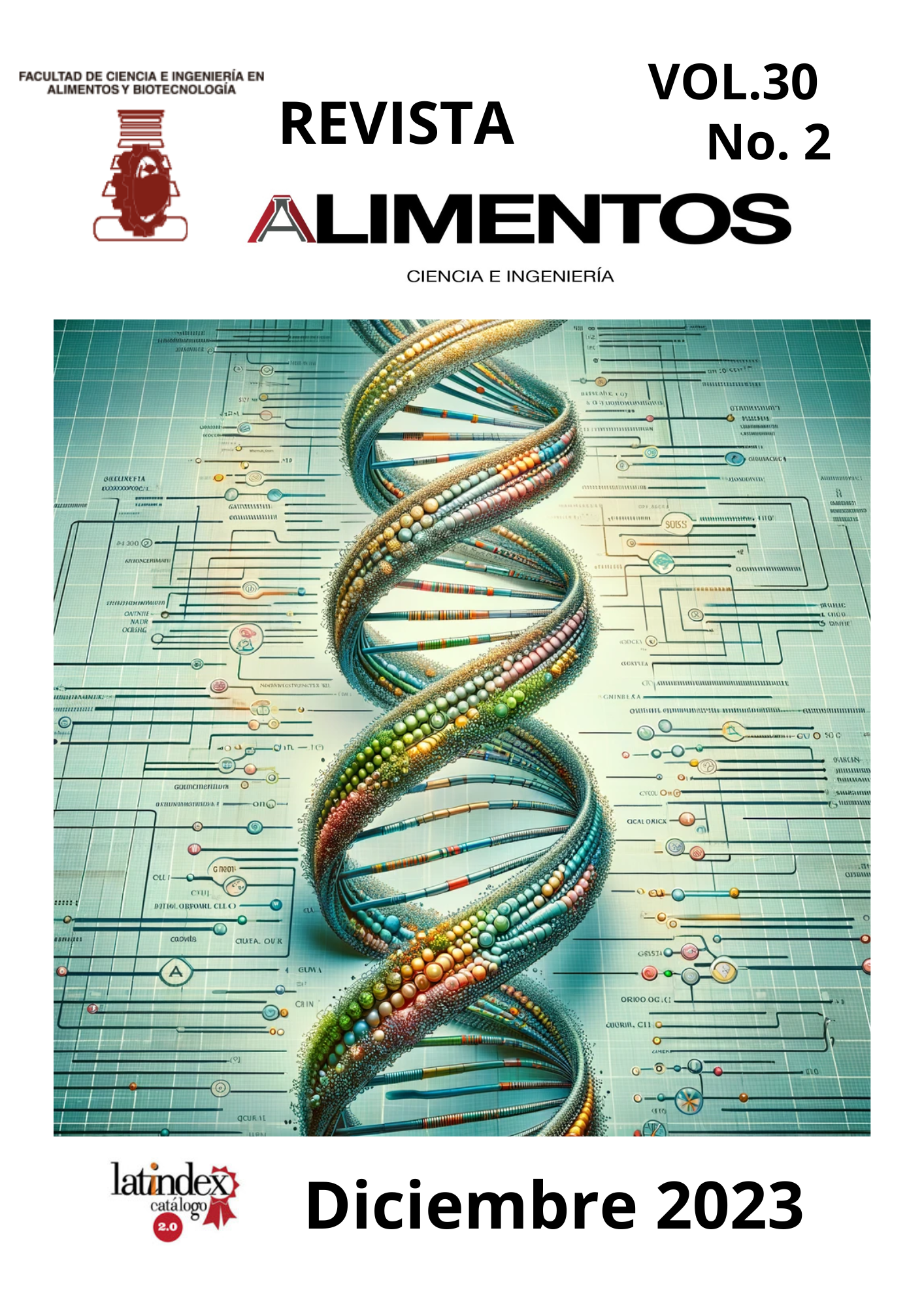Food Drying: Opportunities, Market Solutions, and Nutraceutical Properties of Chayote
Contenido principal del artículo
Resumen
Food drying is a practice that has brought several benefits to the food industry, facilitating transportation, increasing shelf life, and avoiding the need for special treatments or storage according to the product. Due to the benefits and great development in the field of drying in recent years, a review of the main drying techniques of Sechium edule (or chayote) has been developed. Bad practices, food waste, and poor nutrition are some of the problems that open up opportunities to work with the final producer to take advantage of food and extend its shelf life, especially foods with high humidity. In this sense, producing dehydrated products with high nutritional content is a feasible and necessary opportunity that would boost industries, promote better nutrition, and reduce waste. S. edule is an alternative with great growth opportunity due to its nutraceutical characteristics, with physiological benefits through seven of the nine essential amino acids. The latter include phenolic compounds that have shown diuretic, anti-inflammatory, and hypotensive effects, providing benefits to both the commercial sector and the producer by developing a product that facilitates consumption and production and takes advantage of the whole vegetable.
Descargas
Detalles del artículo

Esta obra está bajo una licencia internacional Creative Commons Atribución-NoComercial 4.0.
Aquellos autores/as que tengan publicaciones con esta revista, aceptan los términos siguientes:
a. Los autores/as conservarán sus derechos de copiar y redistribuir el material, bajo los términos estipulados en la Licencia de reconocimiento, no comercial que permite a terceros compartir la obra bajo las siguientes condiciones:
Atribución: debe dar el crédito apropiado, proporcionar un enlace a la licencia e indicar si se realizaron cambios. Puede hacerlo de cualquier manera razonable, pero no de ninguna manera que sugiera que el licenciante lo respalda a usted o su uso.
No comercial: no puede utilizar el material con fines comerciales.
Sin restricciones adicionales: no puede aplicar términos legales ni medidas tecnológicas que restrinjan legalmente a otros hacer cualquier cosa que la licencia permita.
Citas
Bancomext, SNC. (1999). Estudio de factibilidad económica para la exportación de chayote sin espinas (Sechium edule) Centro Bancomext, Veracruz, México. 179 p.
Bermejo, J. E. H. & León, J. (1994). Neglected crops: 1492 from a different perspective. Plant Production and Protection Series No. 26, Food and Agriculture Organization of the United States, Rome, pp. 63-77. Recovered the 3rd of November 2020 from: https://www.fao.org/3/t0646e/t0646e.pdf
Bourdoux, S., Li, D., Rajkovic, A., Devlieghere, F. & Uyttendaele, M. (2016). Performance of drying technologies to ensure microbial safety of dried fruits and vegetables. Comprehensive Reviews in Food Science and Food Safety, 15(6), 1056–1066. https://doi.org/10.1111/1541-4337.12224
Cadena-Iñiguez, J. (2005). Caracterización morfoestructural, fisiológica, química y genética de diferentes tipos de chayote (Sechium edule (Jacq.) Sw). Tesis Doctoral. Colegio de Postgraduados. México. p.156 Recovered the 1st of December 2020 from: https://www.scielo.org.mx/scielo.php?script=sci_arttext&pid=S1027-152X2011000500005
Cadena-Iñiguez, J., Arévalo-Galarza, L., Ruiz-Posadas, L.M., Aguirre-Medina, J.F., Soto-Hernandez, M., Luna-Cavazos, M. & Zavaleta-Mancera, H.A. (2006). Quality Evaluation and Influence of 1-MCP on Sechium edule (Jacq.) Sw. Fruit during Postharvest. Postharvest Biology and Technology, 40 (2): 170–176. https://doi.org/10.1016/j.postharvbio.2005.12.013
Cadena-Iñiguez, J., Arévalo-Galarza, L., Avendaño-Arrazate, C. H., Soto-Hernández, M., Ruiz-Posadas, L. d. M., Santiago-Osorio, E., Acosta-Ramos, M., CisnerosSolano, V. M., Aguirre-Medina, J. F. & Ochoa-Martínez, D. (2007). Production, genetics, postharvest management, and pharmacological characteristics of Sechium edule (Jacq.) Sw. Fresh produce, 1, 41-53.
Cadena-Iñiguez, J. & Arévalo-Galarza, M. L. (2010). Rescatando y aprovechando los recursos fitogenéticos de Mesoamérica Volumen 1: El Chayote. Grupo Interdisciplinario de Investigación En Sechium Edule En México, A.C 20.
Cámara J.S., Albuquerque B.R., Aguiar J, Correa R.C.G., Gonçalves J.L., Granato D, Pereira J.A.M., Barros L. & Ferreira I.C.F.R. (2020). Food bioactive compounds and emerging techniques for their extraction: Polyphenols as a case study. Foods. Dec 24;10(1):37. https://doi.org/10.3390/foods10010037
Chang, K., Ley, S., Lee, M., Yaw, H., Lee, S., Chew, L., Neo, Y. & Kong, K. (2021). Determination of nutritional constituents, antioxidant properties, and α-amylase inhibitory activity of Sechium edule (chayote) shoot from different extraction solvents and cooking methods. Elsevier 151, 1-8. https://doi.org/10.1016/j.lwt.2021.112177
Diré F., G., E. Lima, M. Gomes, M. & Bernardo-Filho. (2003). The effect of chayote (Sechium edule) extracts (decoct and macerated) on the labeling of blood elements with Technetium-99m and on the biodistribution of the radiopharmaceutical sodium pertechnetate in mice: an in vitro and in vivo analysis. Pakistan Journal of Nutrition 2(4): 221-227 https://doi.org/10.3923/pjn.2003.221.227
Galanakis, C. (2017). Nutraceuticals & Functional Components in Nutrition and Food Products. Elsevier SciTech Connect. Recovered the 6th of January 2021 from: http://scitechconnect.elsevier.com/nutraceuticals-functional-components-nutrition-products/
Hernández, D., López S., Hernández I., Molina D. & Escalante A. (2011). Elaboración de deshidratado de chayote. Universidad Tecnológica del Suroeste de Guanajuato. Recovered the 16th of March 2021 from: http://www.utselva.edu.mx/pal/wp-content/uploads/2013/05/57.1.pdf
Hernández- Uribe, J.P., Agama- Acevedo, E., Gonzalez- Soto, R.A., Bello- Pérez, L. A., & Vargas- Torres, A. (2011). Isolation and characterization of Mexican chayote tuber (Sechium edule Sw.) starch. Starch, 63, 32-41. https://doi.org/10.1002/star.201000078


